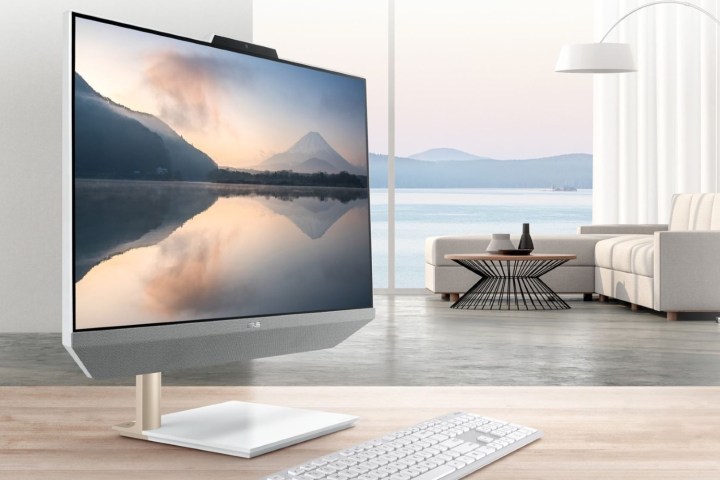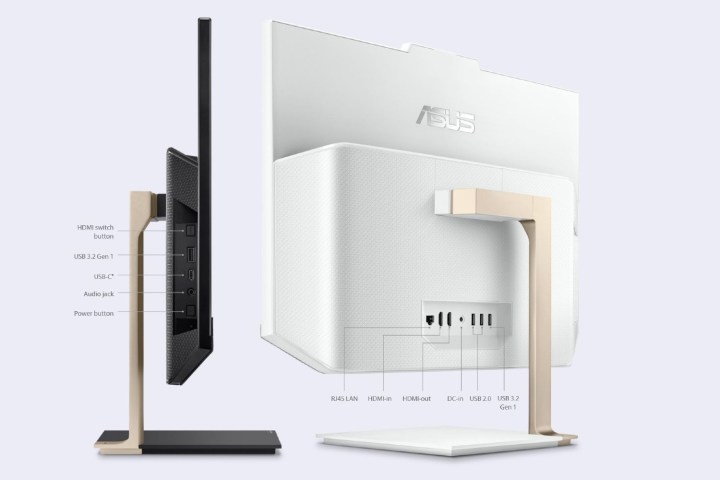
The new 24-inch iMac features a bold new design that has a lot of people talking. Asus has countered with its own all-in-one computer, and it serves as a noteworthy alternative. The Zen AIO packs a 23.8-inch display with ultraslim side bezels, as well as a large chin bezel to match that of the iMac. The thin display takes cues from the iMac design as well, cutting away any unused space behind the screen.
The Zen AIO has a few features the iMac lacks, though. First off, it can be configured with an optional touchscreen layer, giving you another way to interact with your PC aside from keyboard and mouse input. Apple, for its part, stubbornly reserves touch for mobile devices, like the iPad and iPhone, so you won’t find a touchscreen on any Mac devices despite the fact that the new iPad Pro is powered by the same M1 processor that’s found inside the redesigned iMac.
A second big difference is that Asus is relying on AMD’s Ryzen 7 5000 processor coupled with Radeon graphics to power the Zen AIO. The eight-core Ryzen 7 5700U processor or six-core Ryzen 5 5500U processors on the Zen should make for some impressive performance. These are mobile processors, as is common in all-in-ones, and lack dedicated discrete graphics — so don’t expect it to be a killer gaming machine.

Where the Zen does shine as a gaming machine, though, is the addition of an HDMI input port, which allows it to be used as a secondary display. That means console gamers will be able to connect their Nintendo Switch, Sony PlayStation 5, or Microsoft Xbox Series X and use the Zen’s 24-inch screen to play. It’s become a common feature in other flagship AIO computers, such as the Dell Inspiron 27.
Where the iMac edges ahead, however, is with the display. Despite similar designs with minimal bezels at the top and the sides, the Zen is limited to a 1080p resolution on an asymmetrically mounted screen, whereas the new iMac sports a panel with 4.5K pixels. Though Asus didn’t boast about any innovation with the speaker design, the Zen’s speaker is housed at the bottom edge of the screen in a fabric-covered space. The company worked with Harmon Kardon on the tuning, whereas Apple’s iMac comes with a six-speaker array that boasts strong bass, along with accurate mids and highs, as well as Dolby Atmos support.
To keep pricing more affordable, the Zen uses a dual-storage strategy, splitting your available capacity between two solid-state drives. This gives you access to fast storage across both M.2 NVMe SSDs, without the cost of having a single large-capacity drive. Up to a 512GB M.2 drive with a secondary 512GB M.2 drive can be configured for the Zen.
The Zen AIO is available in a single Immortal White hue, so it won’t be immediately as eye-catching as the iMac’s bold color slate, and pricing starts at $699.


